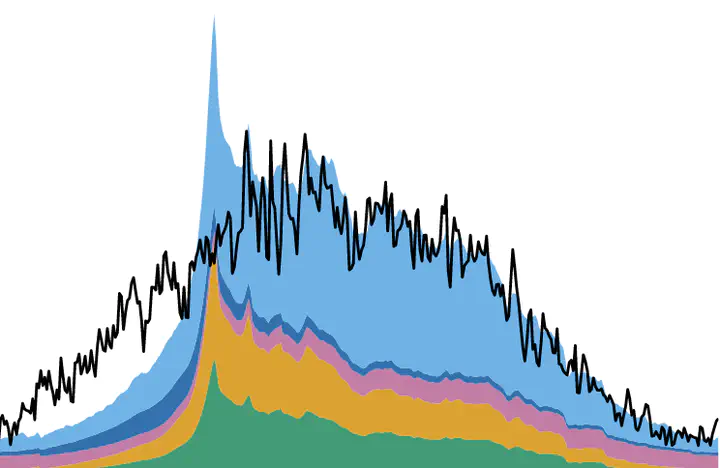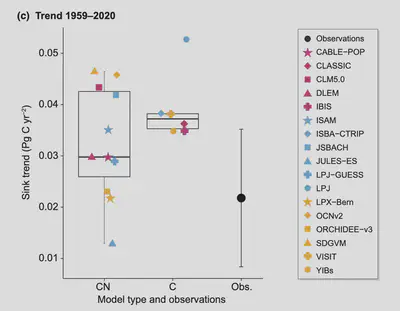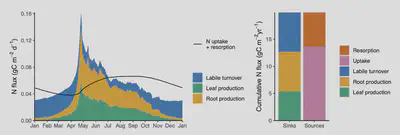Theory and data of carbon-nitrogen cycle interactions

How does nitrogen influence the global carbon cycle?
Nitrogen is an essential nutrient for plants and is used both in photosynthesis enzymes and for building cell structures. Therefore, plant availability of nitrogen plays an important role in the global carbon cycle and its change under global warming and an increase in atmospheric CO2. For example, the question is whether and to what extent nitrogen availability limits the CO2 fertilization of plant growth. Global models simulate these relationships and therefore require a solid understanding of relevant processes. In our review study (Stocker et al., 2024), we show (i) that these models simulate strongly divergent global carbon balances in recent decades (Fig. 1), (ii) that these divergences are related to different representations of carbon-nitrogen cycle interactions, and (iii) that theoretical foundations from evolutionary ecology enable more robust models that explain essential patterns from empirical analyses and experiments.

In another study (Stocker & Prentice, 2024), we show how these theoretical foundations can be implemented in a dynamic model of terrestrial carbon and nitrogen dynamics. The foundation of the model is (i) the acclimatization of photosynthesis to the abiotic environment (climate, CO2) and its implication for nitrogen demand, and (ii) the allocation of assimilated carbon for growth in aboveground biomass (stem, leaves) versus root growth. The model representation of allocation is based on the functional balance approach, which is dynamically simulated in the model as a function of nitrogen, light, and CO2 availability. With these relatively simple basic assumptions, we can predict both the seasonal plant growth dynamics and the CO2 and nitrogen balance of the ecosystem (Fig. 2), as well as the response of plants to experimentally manipulated CO2 concentration and nitrogen fertilization. Thus, we provide a demonstration of how the core of global vegetation models can be formulated to more reliably simulate global changes in the carbon cycle and thus in the Earth system.


References
Stocker, B. D., Dong, N., Perkowski, E. A., Schneider, P. D., Xu, H., de Boer, H. J., Rebel, K. T., Smith, N. G., Van Sundert, K., Wang, H., Jones, S. E., Prentice, I. C., and Harrison, S. P.: Empirical evidence and theoretical understanding of ecosystem carbon and nitrogen cycle interactions, New Phytologist, n/a, https://doi.org/10.1111/nph.20178, n.d.
Stocker, B. D. and Prentice, I. C.: CN-model: A dynamic model for the coupled carbon and nitrogen cycles in terrestrial ecosystems, biorxiv, https://doi.org/10.1101/2024.04.25.591063, 28 April 2024. [pre-print]